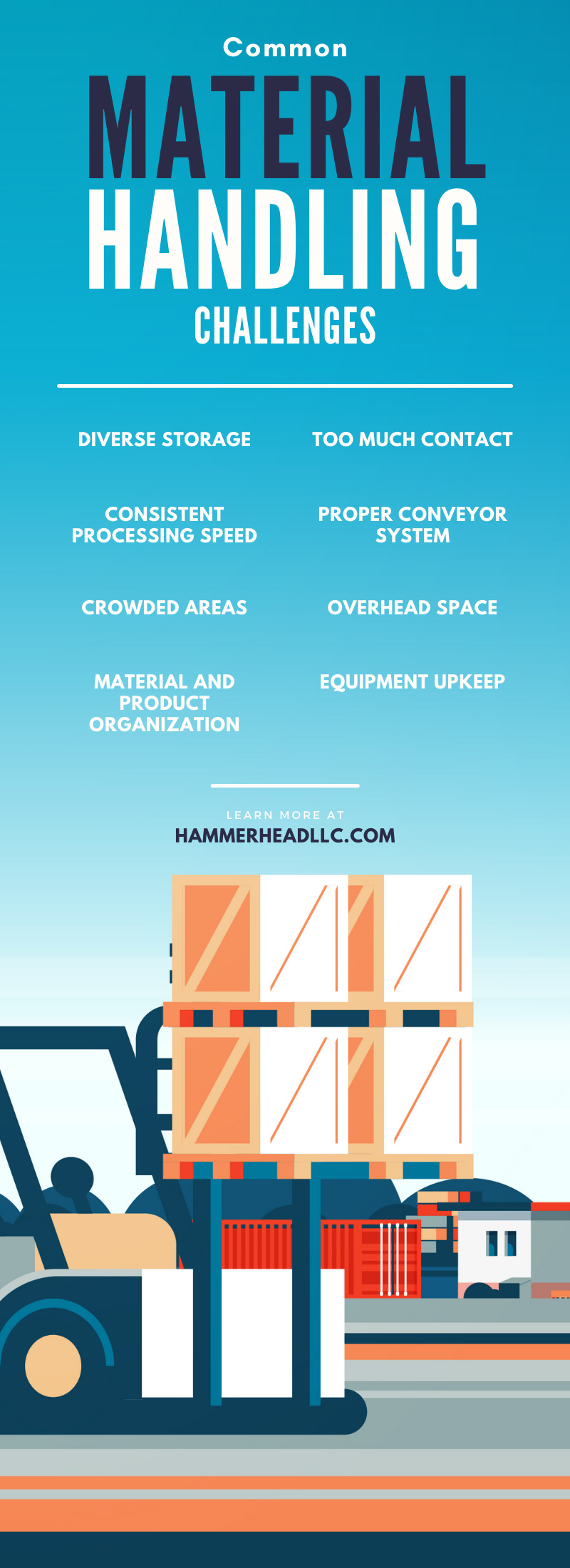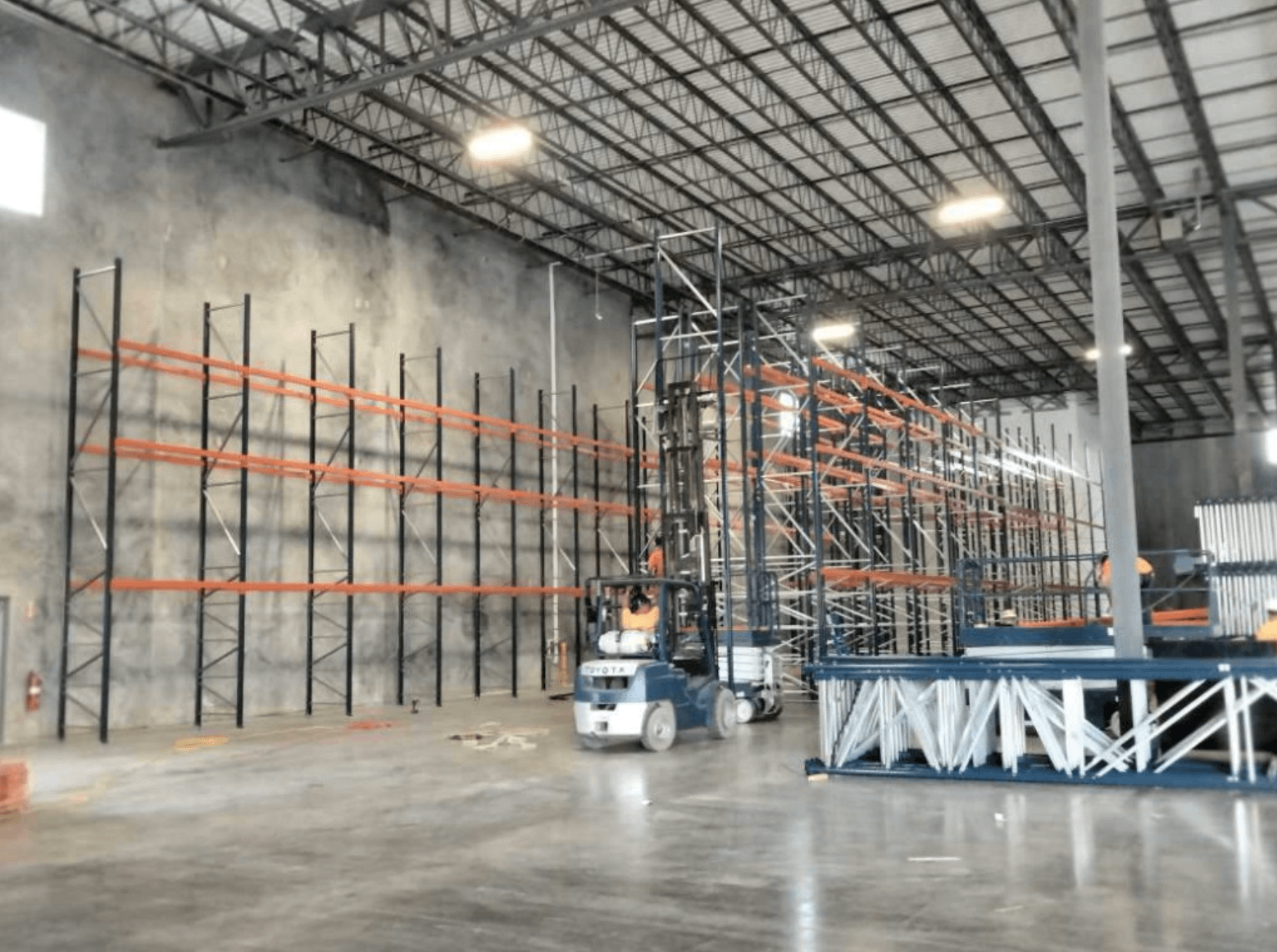Anyone who works with storage will know how problematic a storage system can be. A large issue that plagues every storage place is how to best handle materials and products. Without proper management, it’s difficult to profit out of any storage area because of these material-handling inefficiencies. This’s why you should make it your job to know the common material handling challenges. That way, you can maximize your profits and improve your storage system at the same time.
Diverse Storage
One of the first problems many places will have concerns the type of storage they hold. It’s easy to get the simplest racking system that can hold a variety of materials. However, this isn’t the most effective way of storing things. You want systems that can handle the full variety of your materials and racking that can hold your specific materials without wasting space.
Future Needs
Another common problem people have when planning their storage areas is not planning for expansion and growth. Ideally, as you are successful with your warehouse, you’ll need more space to store more things. This is something you should plan for before it becomes a problem. That way, you are ready for the growth instead of rushing to make sure you can handle the new demand.
Too Much Contact
Material handling is all about minimizing costs and raising efficiency. That’s why you want workers to deal with each material for as little time as possible. The less time your workers spend moving or processing a material you could automate is more time they can do the jobs you need them to do. A good conveyor system tries to limit the number of times an employee needs to touch the materials.
Proper Conveyor System
A good conveyor system is the lifeblood of a storage area. If it isn’t automated, moving and transporting materials can cost a lot of money and risk employee health. Not only that, but a conveyor system can typically transport goods at a much higher speed, meaning your site can handle more materials and produce things faster.
Consistent Processing Speed
Another part you should consider is the speed at which you process goods and materials. Wherever possible, your entire system should have consistent speed. If one of your systems or processes is too fast or too slow, you’ll notice problems with overflow or backups—both of which can cost you a lot of time and stress employees.
Crowded Areas
One of the most important parts of material handling and overall efficiency are the workers. That’s why you need to take care of them and ensure they can do their jobs properly and safely. In terms of material handling, you need to be sure they have the room they need to do their work properly. Crowded loading zones and pathways will only risk injuries and result in the work slowing down.
Dead Space
It’s very important that you have a well thought-out plan and layout when you’re making your storage area. Many places don’t test and try various different layouts, which means they often choose sub-optimal systems. This often leads to dead space where there isn’t enough room to store anything, but which still takes up and wastes a lot of space. Plan to reduce these dead spaces as much as possible.
Overhead Space
Another space that’s often underused is the area overhead. Racking doesn’t just need to be head height with proper equipment and planning—you can use all the space from the floor to the ceiling. This can greatly increase the amount of available storage. Plus, you can have overhead conveyor systems to move materials without using floor space. Just make sure that it’s completely safe, as falling materials can be very dangerous.
Picking Process
The retrieval of items and materials from racking can take a lot of time. Invest in good systems and things that help workers get the correct items where they need to go. Getting an automated picking system or investing in material-handling racking systems that helps with loading and unloading is a great way to speed up the picking process.
Material and Product Organization
Another way to greatly improve your picking process and lower confusion and mistakes is to have a simple organization system for all your materials. Everything should have clear labels and consistently be in the same place. This will reduce confusion in your workers. You should also organize your storage according to what you use the most. The frequently used items should be nearest to the processing area, and the loading should be near where you intake and process that material. This greatly reduces the amount of time a worker needs to handle materials.
Equipment Upkeep
Every piece of equipment you own should be necessary to your business. This is because it costs money to own and operate all your equipment. Fuel and electrical costs for machinery or repair costs for racking and tools build up and cost you a lot of money. You need to plan for these costs as they influence the cost of material handling.
Preventative Maintenance
One way to help reduce all these costs is to run preventative maintenance. This is the act of doing simple maintenance to fix problems before they become big issues. Actions such as replacing or repairing slightly damaged racking or cleaning conveyors of material buildup can save you a lot of time and money. Doing preventative maintenance can help you to avoid breakdowns that would halt your entire operation.
Inspections
A large part of preventative maintenance and good safety is running constant inspections of your workplace. Look for any obstacles or hazards that increase danger or slow down work. Immediately fix any issues you find to avoid future problems. These inspections include searching for things like spills or buildup to racking damage or unsafe practices. Run these inspections often—at least once a week—to get the full effect and protect your employees.
These are just common material handling challenges that every business must contend with to maximize their profits and efficiency. But by answering these problems, you should be well on track to a system that works for you and your space.



